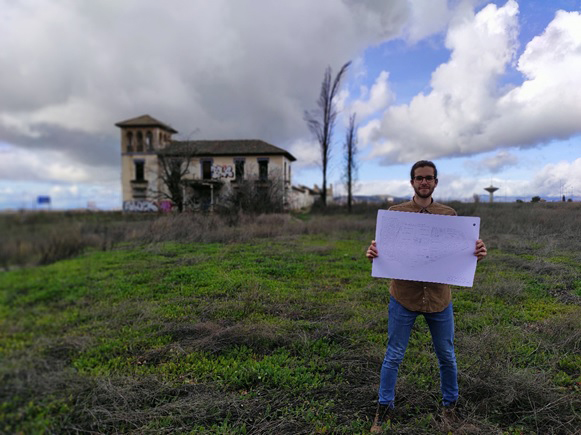A large green area with urban gardens in the water meadow of Granada
A project designed as a Final Master Degree Project at the ETSIAAB seeks to recover the Casería de los Cipreses degraded environment, one of the last farmhouses in the Andalusian city.
May, 2021
Recover a peri-urban farm in the water meadow of Granada is the idea behind a project presented to the City Council of the Andalusian city that was previously designed as a Final Master Degree Project at the Escuela Técnica Superior de Ingeniería Agronómica, Alimentaria y de Biosistemas (ETSIAAB). The proposal aims to convert the area around the Casería de los Cipreses, one of the last remaining farmhouses in the municipality, into an ample green space with urban gardens. Rogelio Nogales, a graduate of thel MSc Degree in Agricultural Engineering, is the author of the academic work, led by professor Luis Ruiz García, - Department of Agroforestry Engineering, and founder of the website on urban gardens AgroHuerto.
Casería de los Cipreses, whose origins date back to the 18th century, is one of the most emblematic farms in Granada. Located next to one of the main accesses from the north, Avenida Juan Pablo II, it is one of the last remaining vestiges in the capital of its water meadow, the vast surrounding plain that was the agricultural engine of the different cultures that populated the area. Nevertheless, the farmhouse has been abandoned and plundered for decades. This has caused significant deterioration to the building (declared an Asset of Cultural Interest). It stretches over almost 4 hectares of land, owned by the City Council for the last 14 years.

Rogelio Nogales muestra en la Casería de los Cipreses uno de los planos del proyecto de recuperación de la finca
Granada, due to its growth, is in doubt as to how to integrate the old farms. This urban sprawl is not an option for the future for those responsible for the project. It would make an agricultural environment of high historical and cultural value disappear for sure. A return to traditional agriculture is not a good idea either. Just because of all this, urban agriculture is the best alternative, they say.
The project plans to create vegetable gardens. Families, young people, the elderly and people with functional diversity, schools, associations and other entities in the northern area of Granada will enjoy them. Fruit trees, a Mediterranean forest, and a vegetation barrier next to the A-92 motorway (Seville-Almeria) to help mitigate air and noise pollution will also be part of the project. The restoration of the original gardens and other areas, such as one for children and one for pets, will promote joy and fun.


Plans for the project to restore the peri-urban farm.
Rogelio Nogales explains that the project "aims to be a complement" to the green belt Plan around the city of Granada signed by the City Council and the Plant for the Planet foundation in October. The new green spaces around the capital will help to improve air quality. For his former professor, the rehabilitation of the farm would represent "a great chance" for the municipality ecological transition, "reconnecting Granada's water meadow with the city and, eventually, improving health and wellbeing in Granada".
As they both see it, urban agriculture has contributed to the successful reconversion of degraded areas in the peripheries at the national and international level. This shows the potential of the proposal for the ‘Casería de los Cipreses’. They mention the social impact of this initiative, apart from the positive effects already mentioned, such as the landscape environment restoration and the pollution reduction. The peripheral neighbourhoods, with fewer resources, would benefit the most from urban agriculture since this tool may build social fabrics that will produce more integrated societies and promote healthy lifestyles, they argue.

